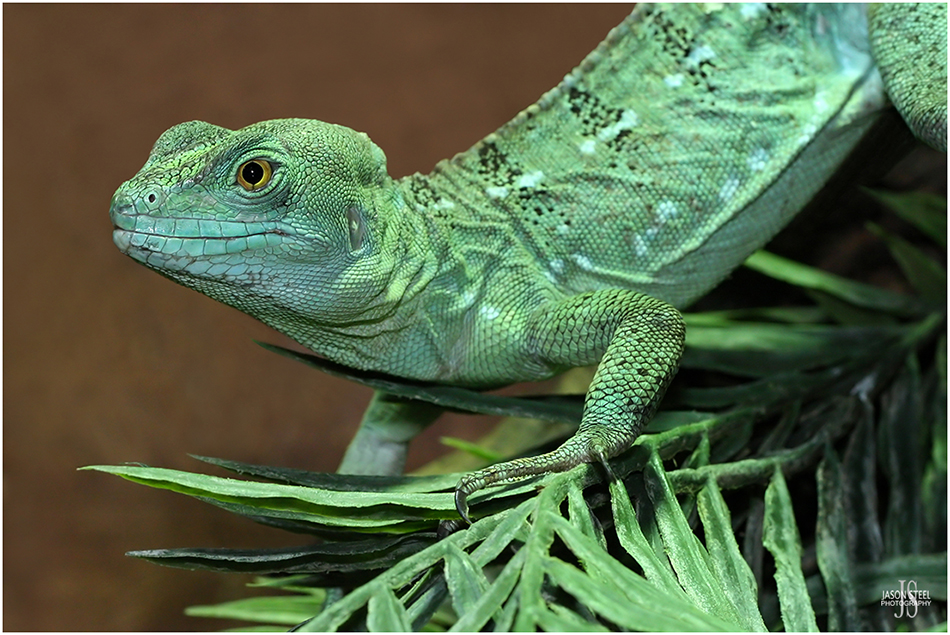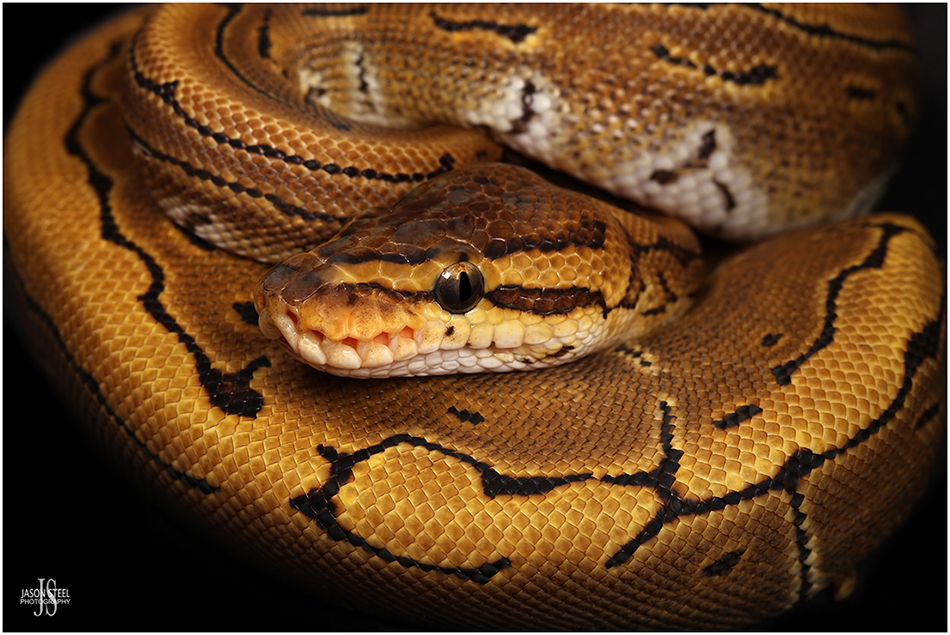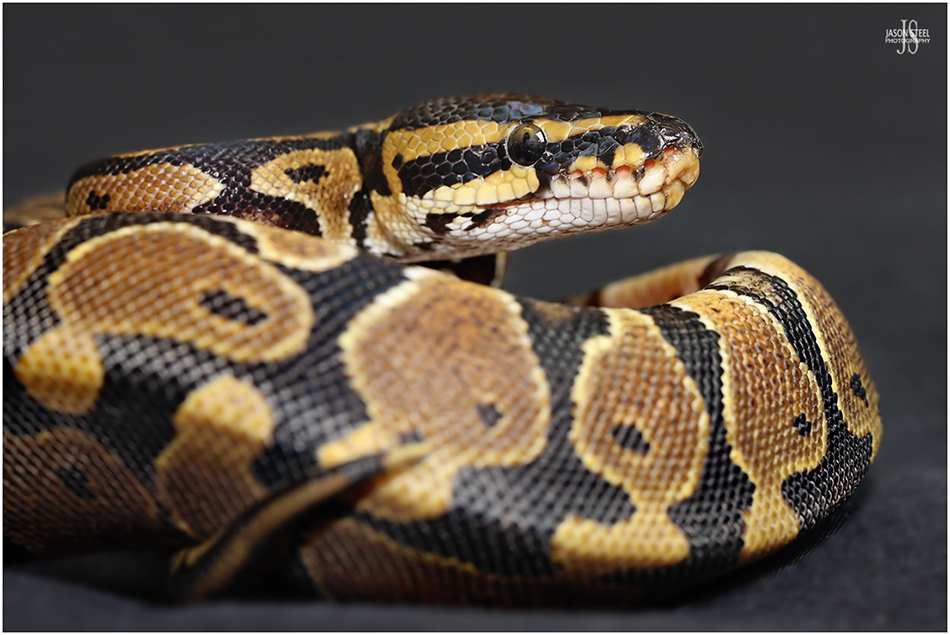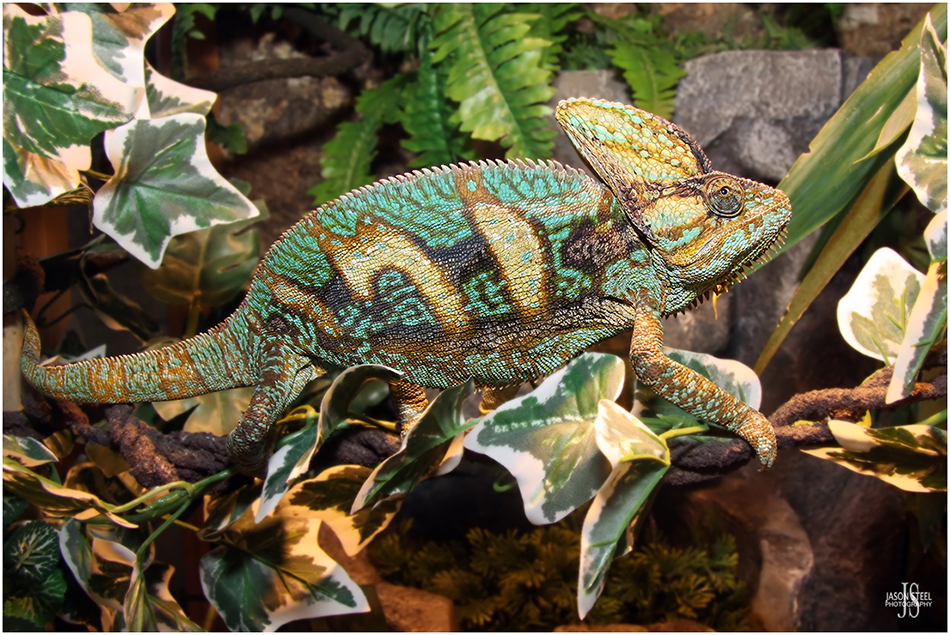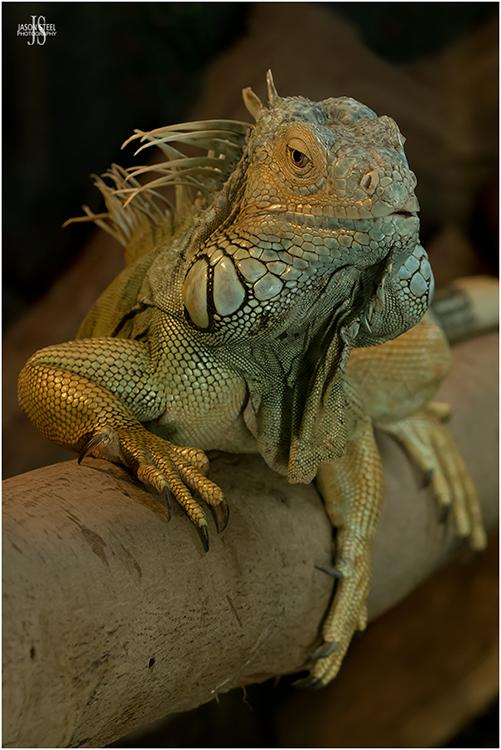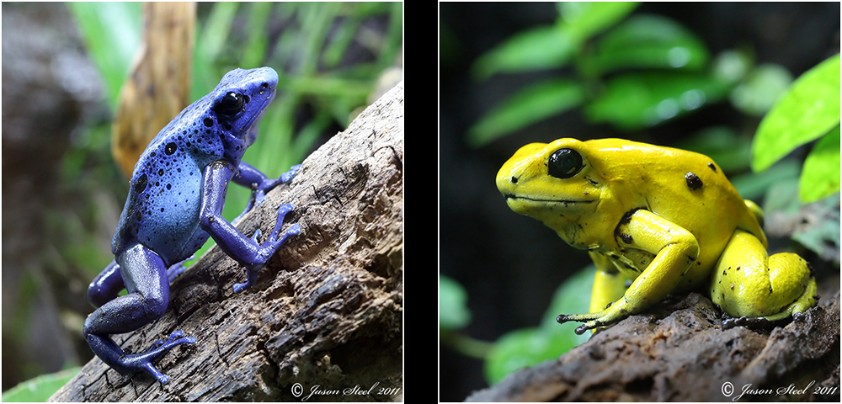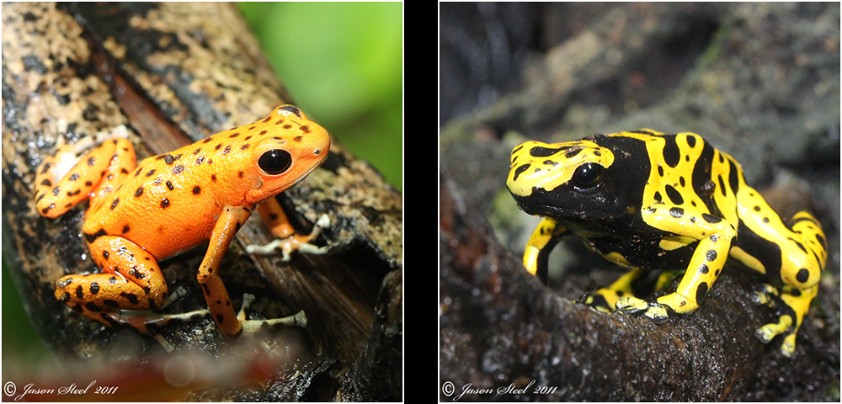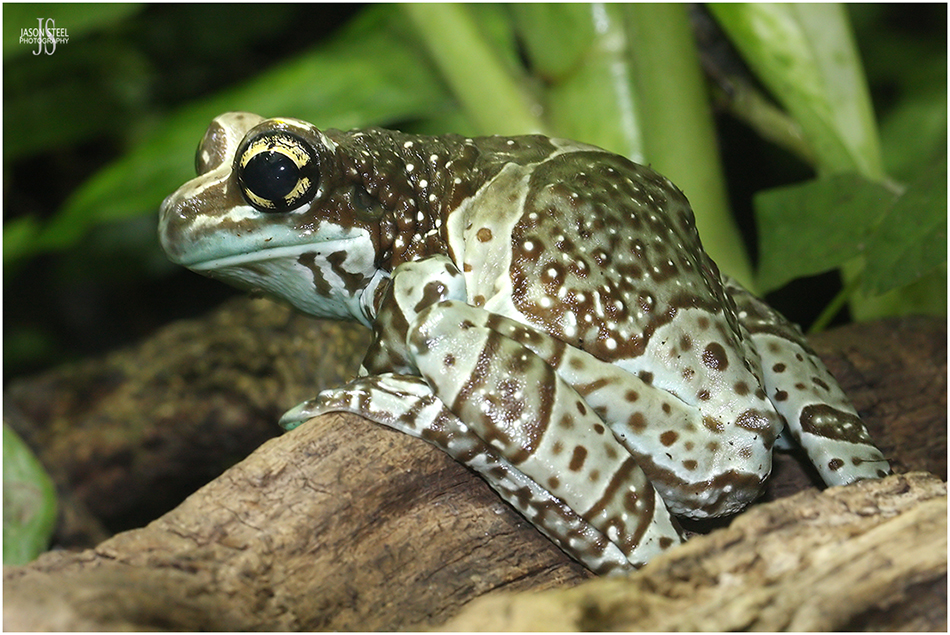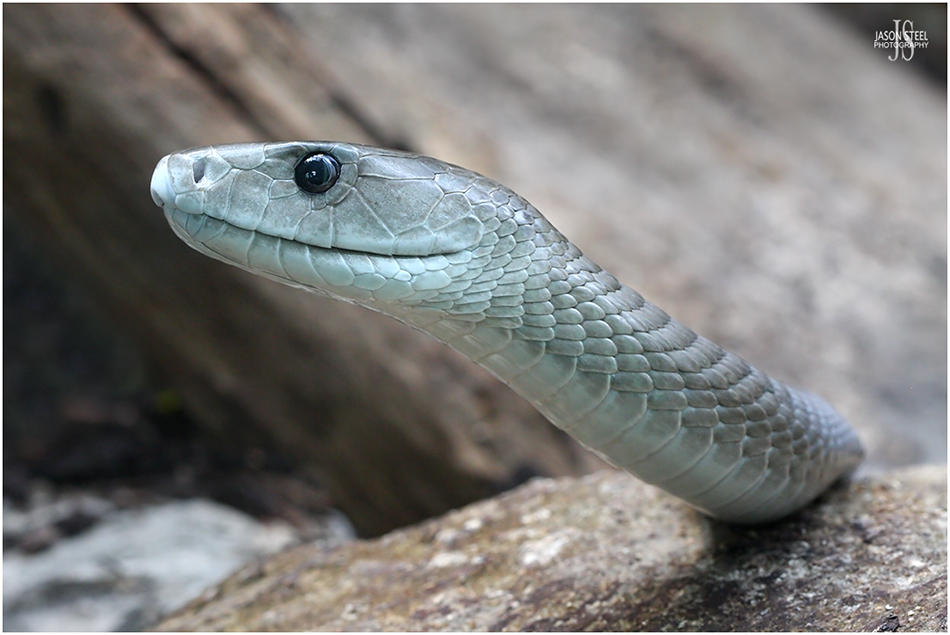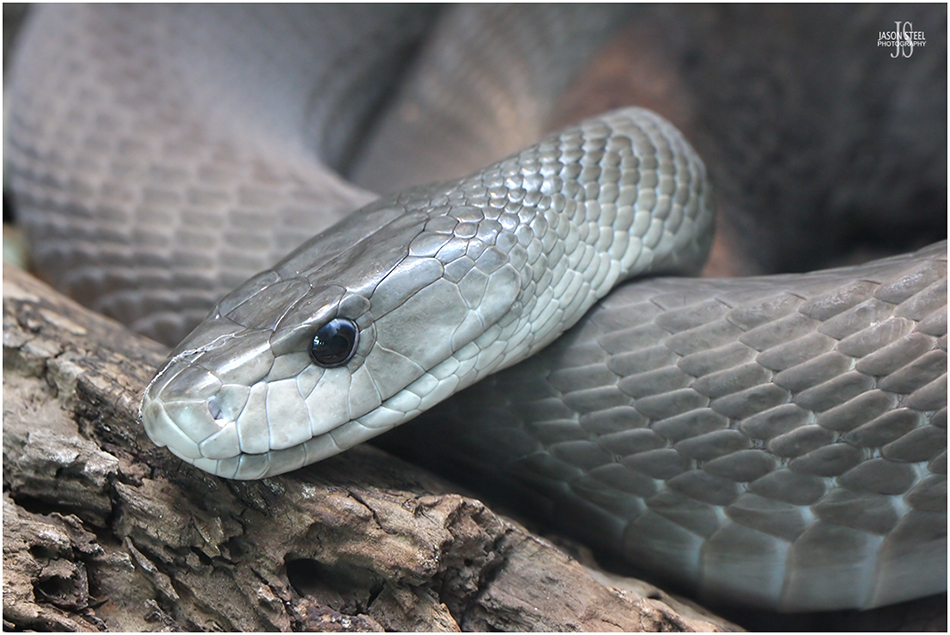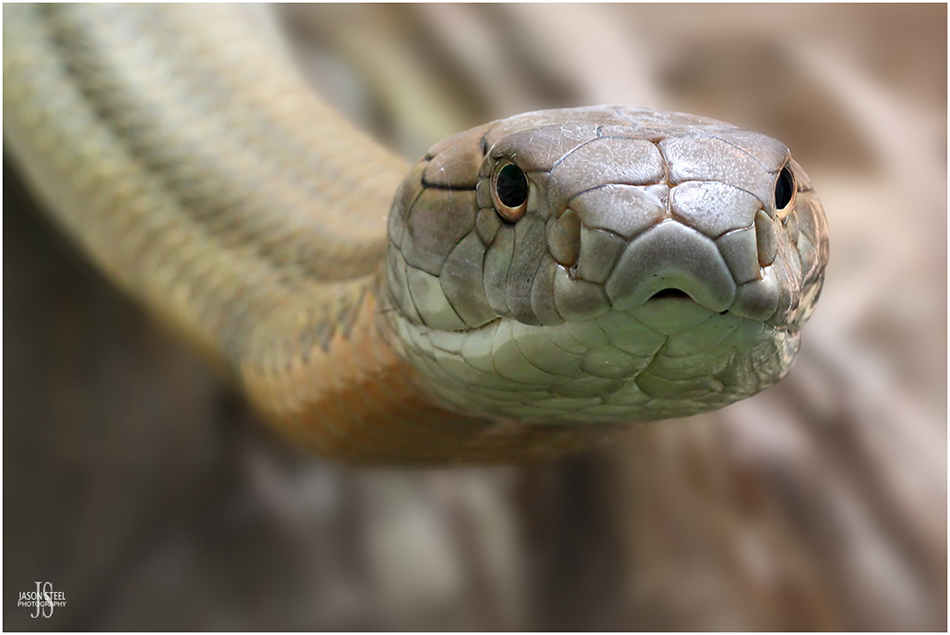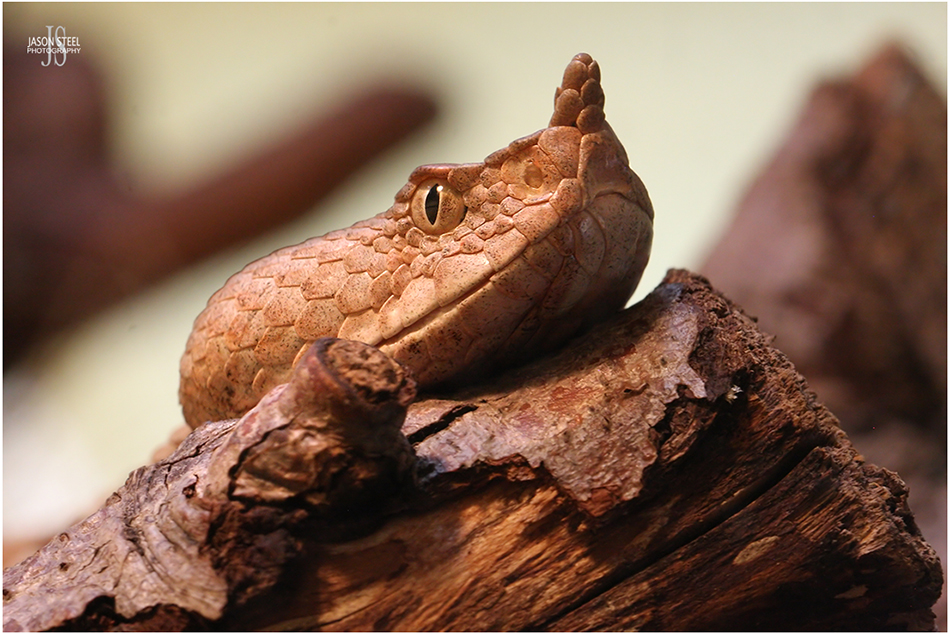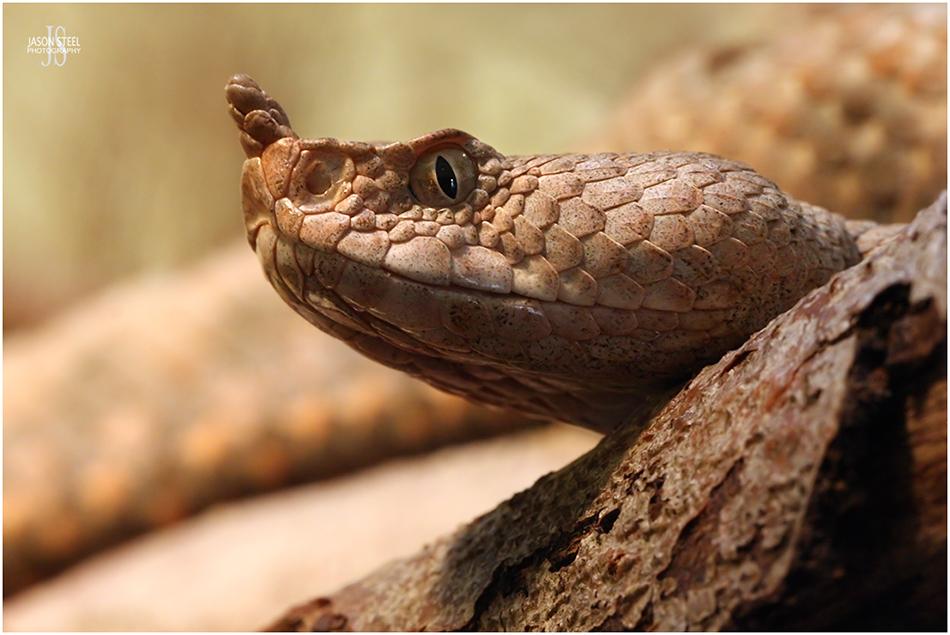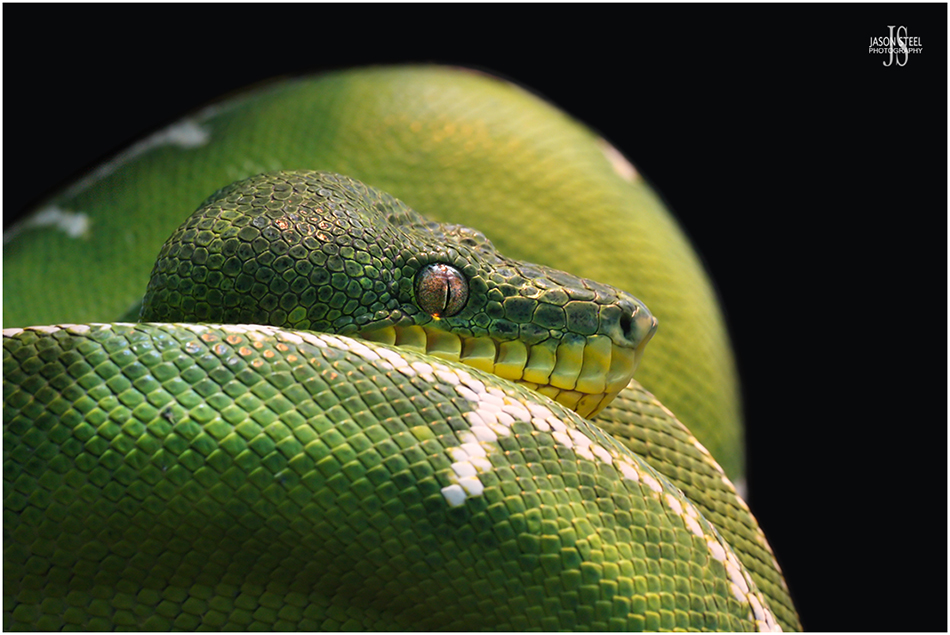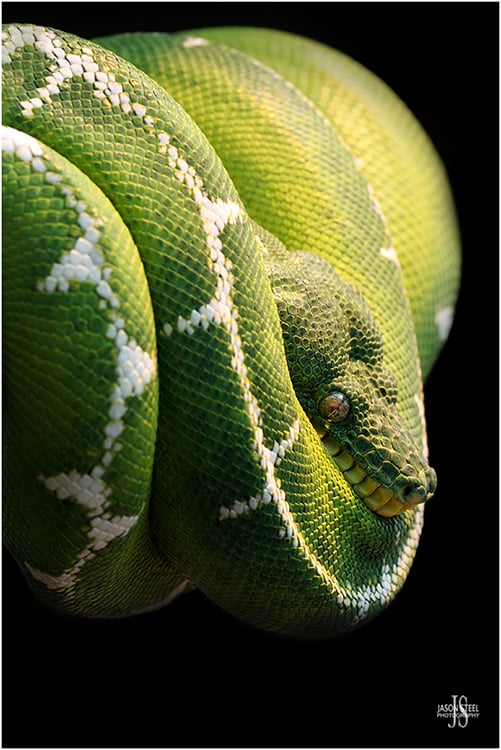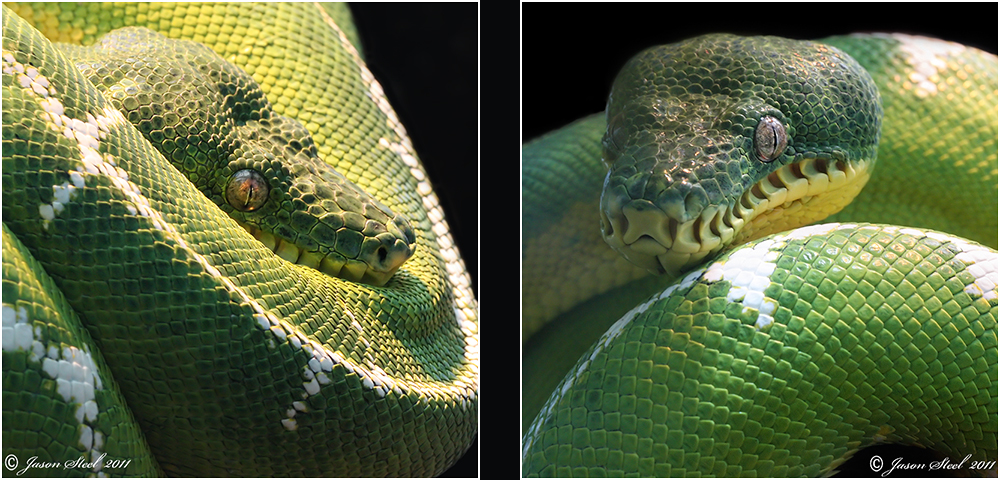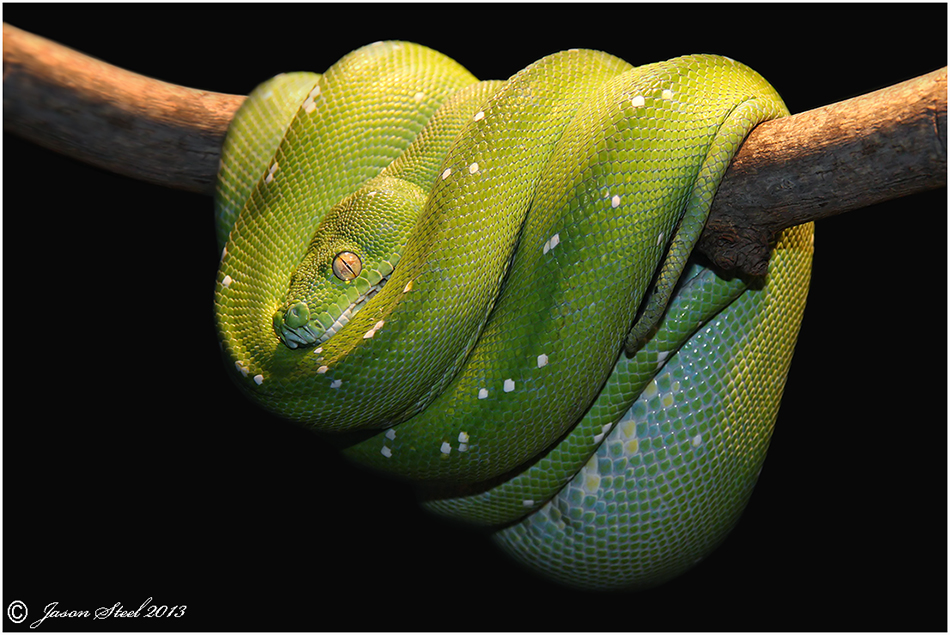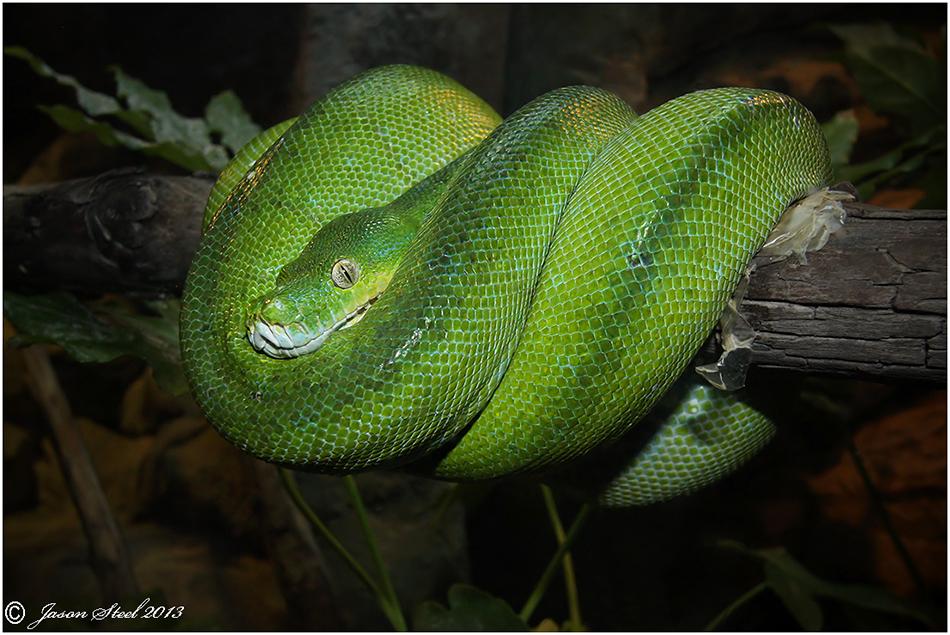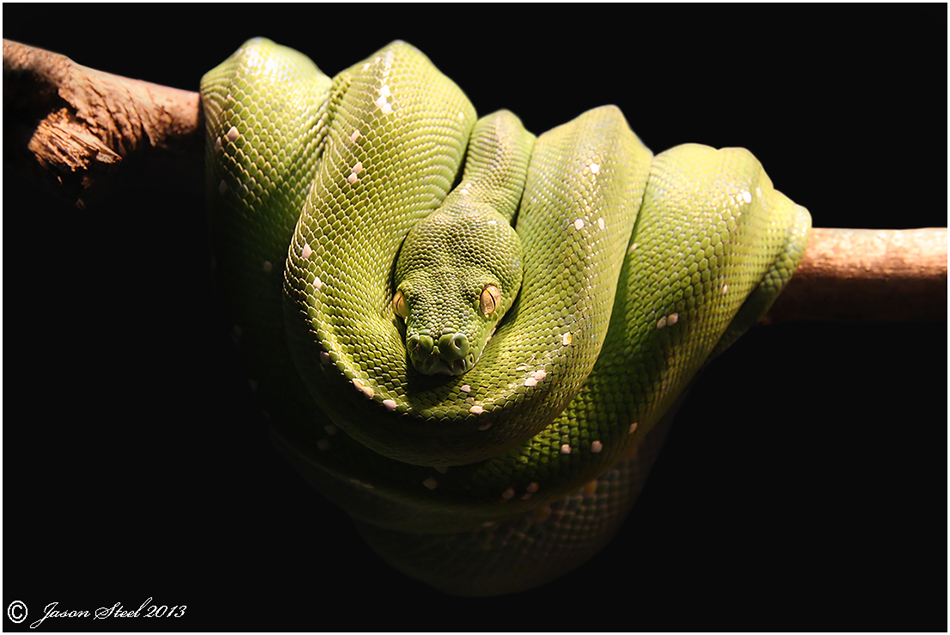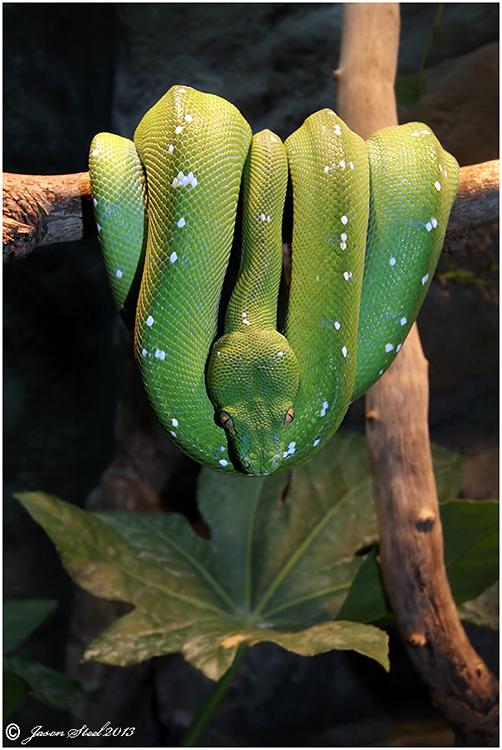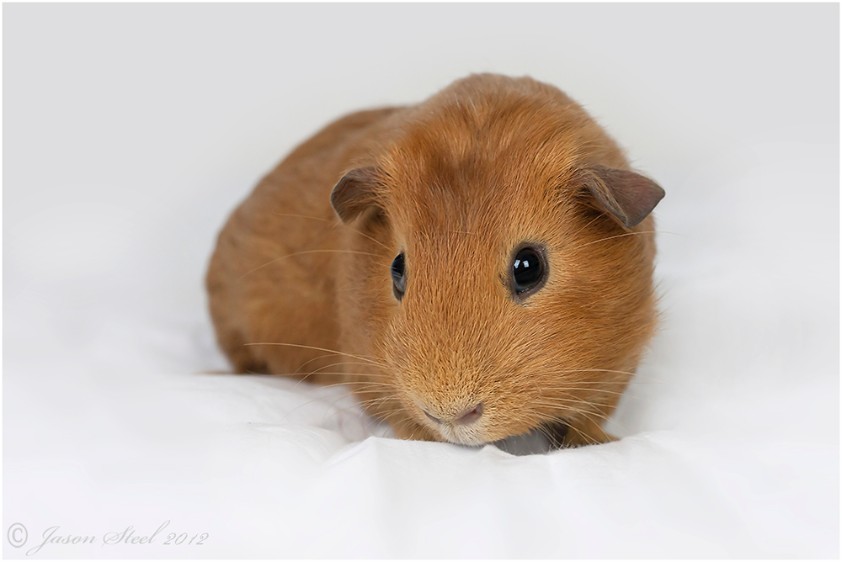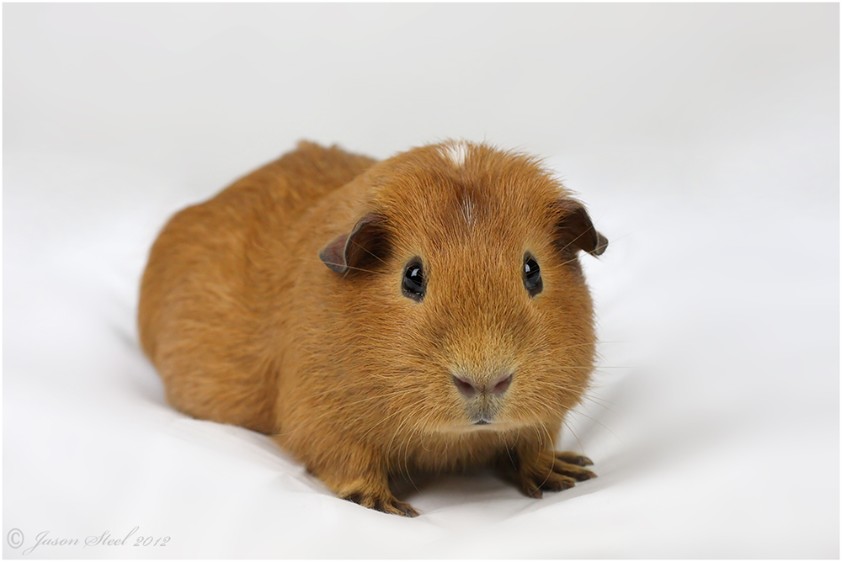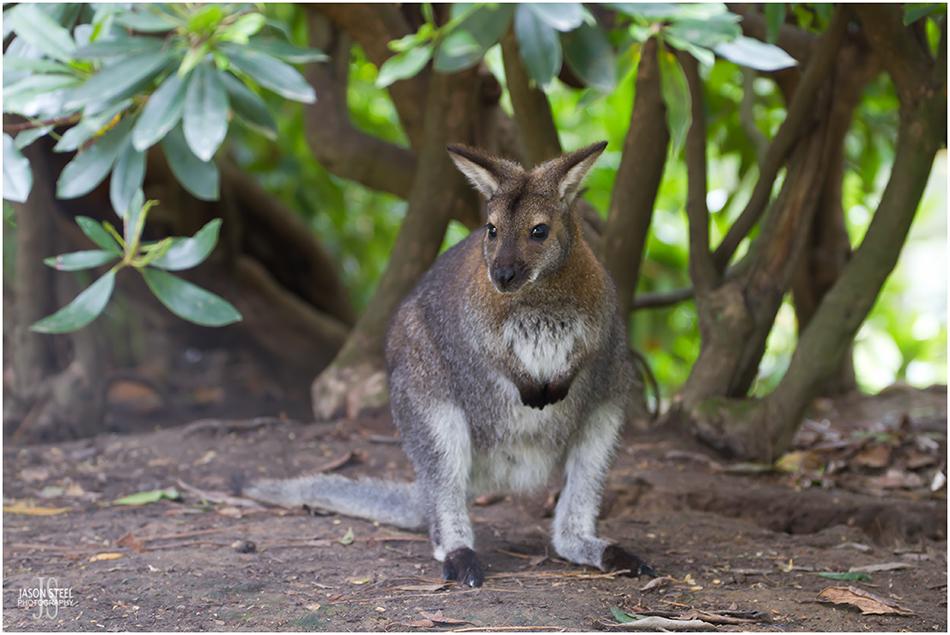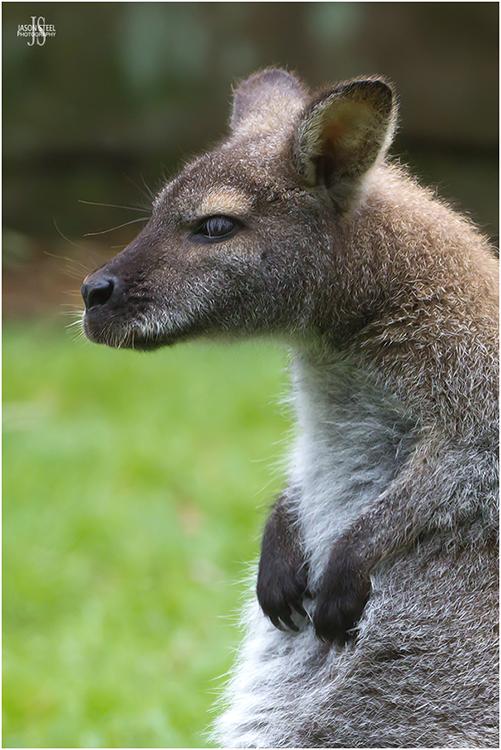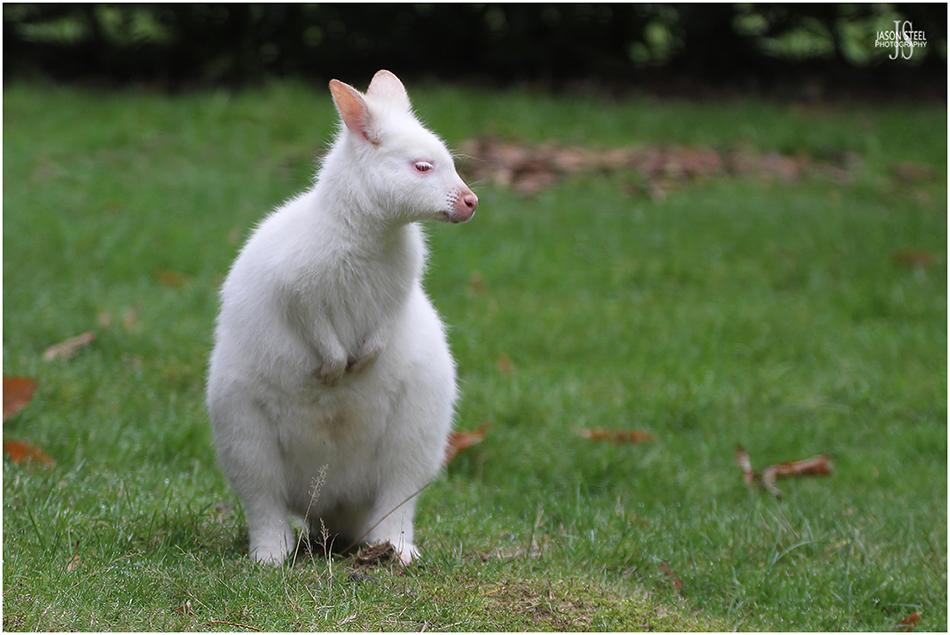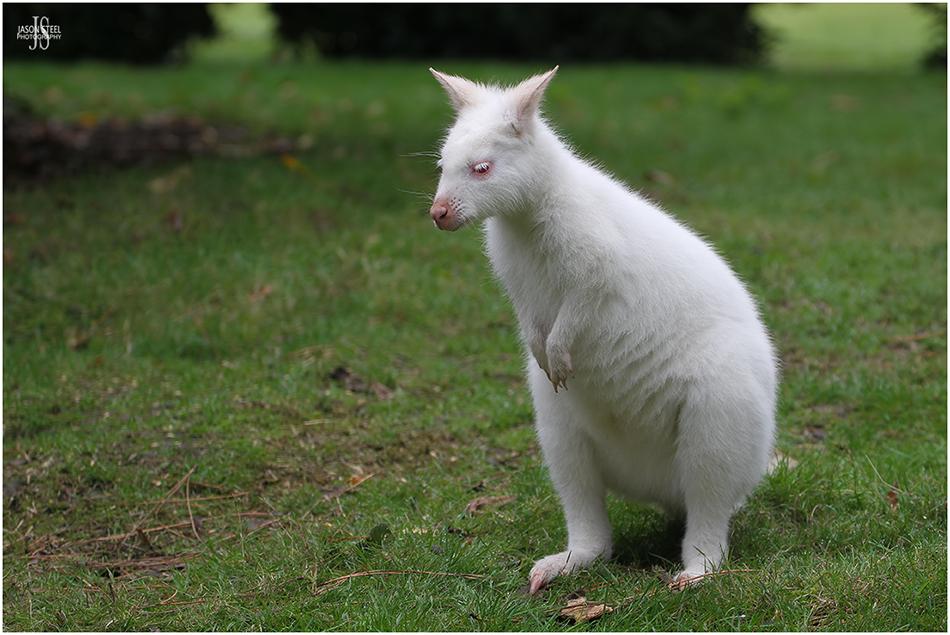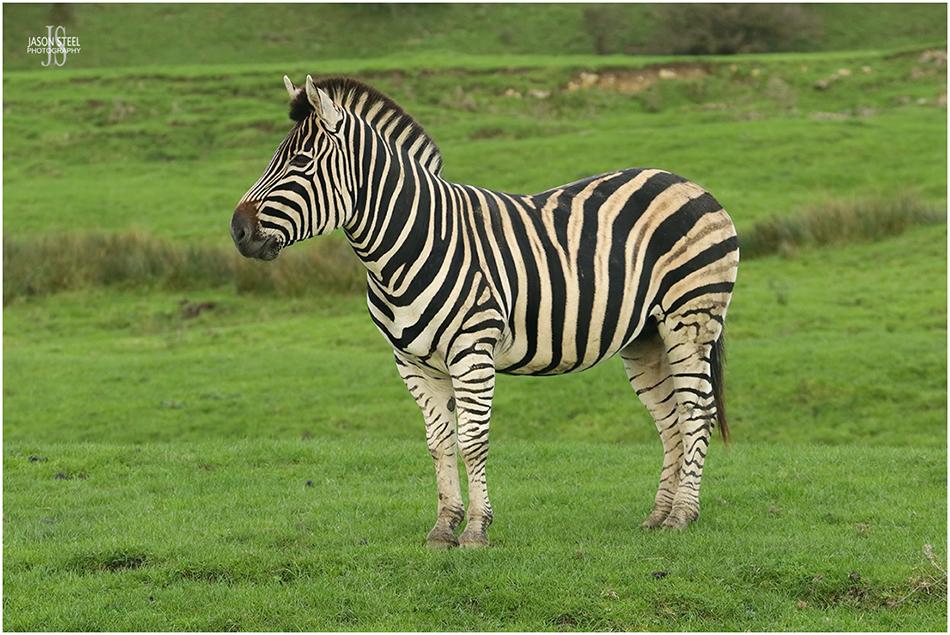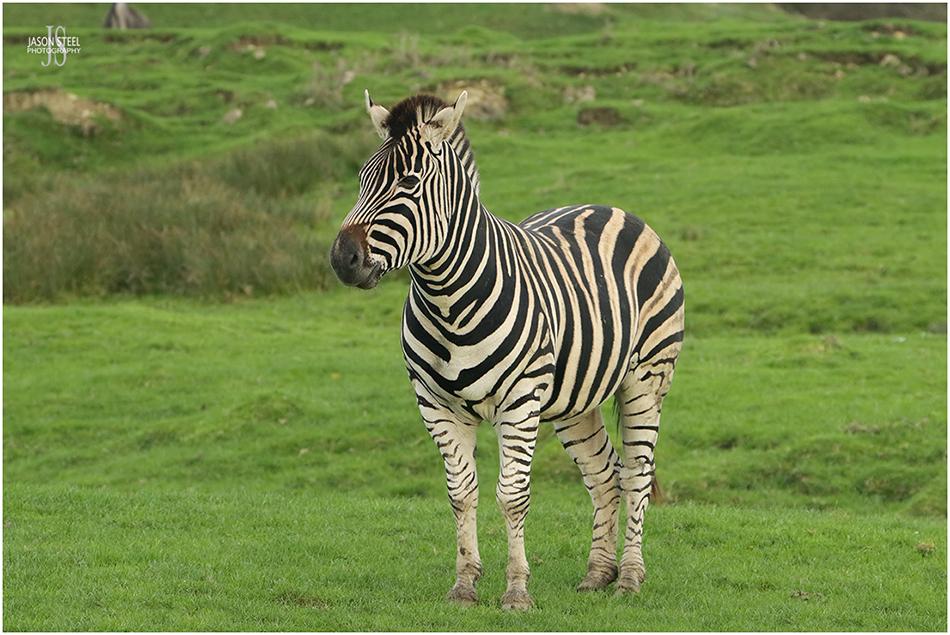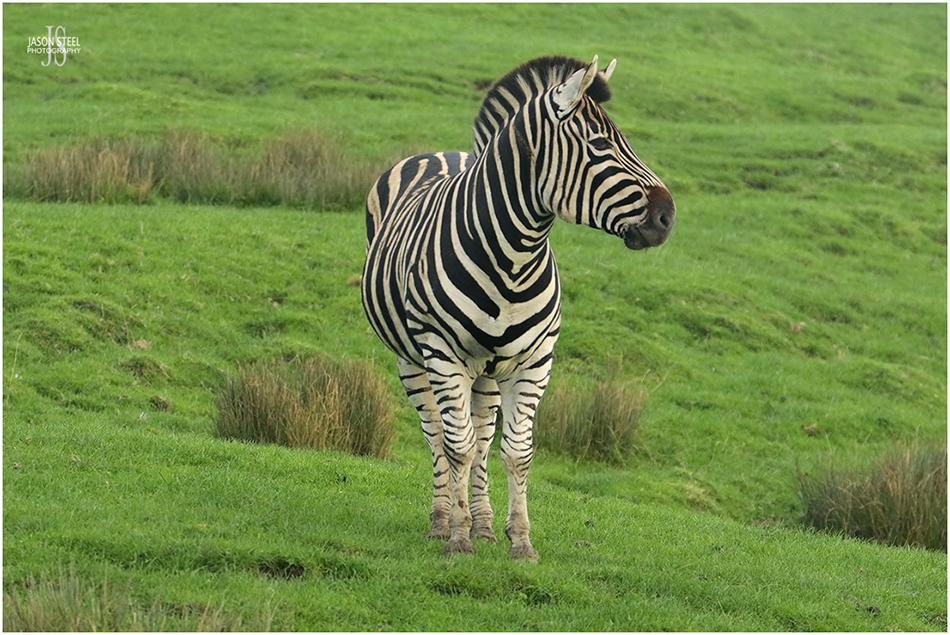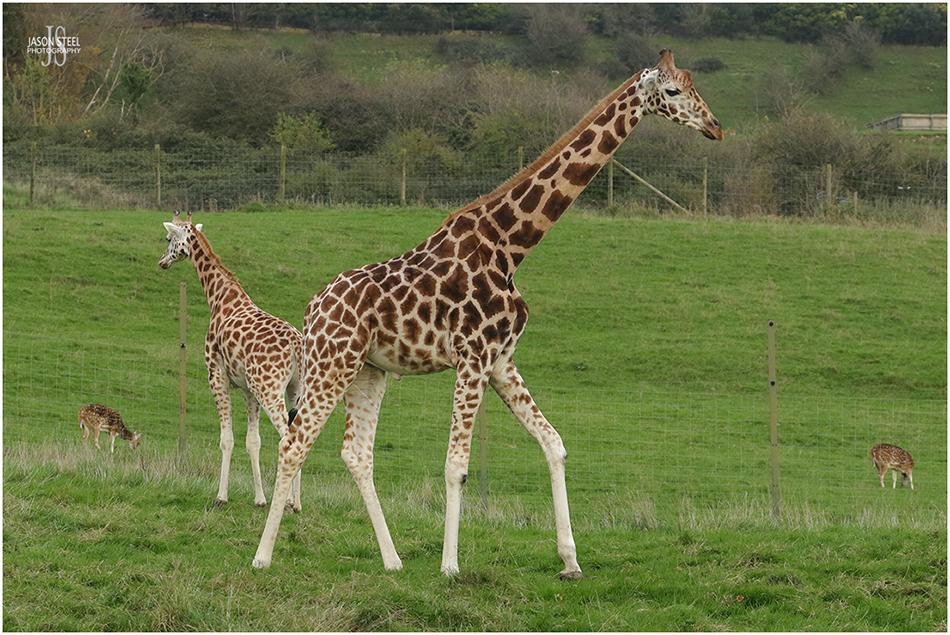Non-Native
This page is for non-native species of wildlife that I've photographed in captivity.
Green Basilisk, photographed in captivity 2011.
Green Basilisk (Basiliscus plumifrons)
The Green Basilisk is a beautifully coloured lizard found mainly in the tropical rain forests of Central America. Known best for its amazing ability to run across the surface of water at great speed. The Green Basilisk spends much of its time in trees and is rarely found too far from a body of water.
Royal Python, photographed in captivity 2012.
Royal Python / Ball Python (Python regius)
The Royal Python is originally found in Africa. It has become one of the most commonly kept snakes in the pet trade because of its stocky build, relatively small size ( 90-120cm ) and its usually placid temperament. They are usually black or dark brown with lighter brown or gold sides and patches but selective breeding in captivity has resulted in many different patterns and morphs being available in the pet industry. They are also known as Ball Pythons because of their unusual defence strategy which involves the snake rolling itself into a tight ball with the head hidden when threatened.
Royal Python, photographed in captivity 2012.
In the wild the Royal Python is generally a terrestrial species although like most snakes they can climb well if they need to. They usually inhabit disused mammal burrows and other underground hiding places. Like all pythons Royal Pythons are constrictors feeding almost entirely on small mammals but they have also been known to take birds on occasion.
On 11th September 2020 the BBC reported on a captive Royal Python, held at the Saint Louis Zoo in Missouri, USA, produced a batch of fertile eggs despite the snake having no contact with a male snake for over 15 years. What makes this story even more remarkable was the age of the snake. At 62 years old this Royal Python was believed to be the oldest living snake. Prior to this the oldest documented Royal Python to date was a male specimen held at Philadelphia Zoo, which died at the age of 47. LINK
Yemen Chameleon, photographed in captivity 2008
Yemen Chameleon (Chamaeleo calyptratus)
The Yemen Chameleon (also known as the Veiled Chameleon) is one of the many exotic reptiles that has recently become fairly commonly kept in the UK pet trade. They can occasionally grow to an impressive 24 inches in length but half of this length is tail. Adult males are easily identified by their bright markings and the prominent veil on top of their head.
Common Green Iguana, photographed in captivity 2021.
Common Green Iguana (Iguana iguana)
Various Poison Dart Frogs, photographed in captivity, 2011.
Poison Dart Frogs
Although very small the Poison Dart Frogs are considered to be one of the most poisonous creatures on the earth. Generally found in the tropical rainforests of Central and South America they vary considerably in colour and pattern with many species. Unlike most frogs the Dart Frogs are diurnal meaning they are mostly active during the day time.
Mission Golden Eyed Tree Frog, photographed in captivity 2011.
Mission Golden Eyed Tree Frog / Amazon Milk Frog (Trachycephalus resinifictrix)
Another beautiful frog from the South American Rain Forests. This frog grows to 10cm in length and may never come down from out of the trees. Because of this they are rarely seen but they are often heard with their distinctive loud call.
Black Mamba, photographed in captivity 2011.
Black Mamba (Dendroaspis polylepis)
The Black Mamba is the largest venomous snake found in Africa. Measuring up to 14ft in length it is one of the most feared snakes in the world. The Black Mamba is capable of moving across land at speeds of up to 10-12mph making it the fastest snake in the world.
The Black Mamba gets its name from the black colouration of the inside of its mouth and not from its skin colour which can vary from a dull greenish colour to a slate grey colour. A bite from this snake will normally prove fatal to humans unless anti-venom is administered rapidly. Death can occur in as little as 20 minutes but 30-60 minutes is more often the case.
King Cobra. Photographed in captivity 2011.
King Cobra - (Ophiophagus hannah)
The King Cobra is member of the Elapidae family, and is the longest venomous snake in the world. Adult specimens usually grows to around 13ft in total length. The claim for the largest specimen ever recorded was an incredible 19.2ft in length! The longest known specimen to be kept in captivity was held at London Zoo, and grew to over 18.5ft in length, before sadly being euthanised at the outbreak of WWII. The heaviest recorded King Cobra weighed 12.7kg, and was held at the New York Zoological Park. There are claims that some specimens of Eastern Diamondback Rattlesnake, and Gaboon viper, have managed to exceed this weight.
The King Cobra is the only species in the Ophiophagus genus, and is not regarded as a "true cobra". All other cobras come from the Naja genus. For its size the King Cobra is remarkably quick and agile. King Cobras are a forest / jungle species, found in South and South-east Asia. Male specimens tend to be larger in size, and paler in colour, than the females. The scales of the King Cobra are smooth and unkeeled. The King Cobra can deliver huge doses of venom in a single bite and they have a striking range of about 7ft. A bite to a human can result in death as quickly as 15 minutes, but 30-45 minutes is most likely if urgent medical treatment isn't received. The neurotoxic venom causes immediate severe pain, which is soon accompanied by blurred vision and vertigo. The victim then becomes drowsy and eventually paralyzed. At this stage the victim often slips into a coma, before dying from respiratory failure. Bites from King Cobras have even been known to kill adult elephants within hours.
. The preferred food source for the King Cobra is other snakes including other venomous snakes. In the wild it is believed the King Cobras live to reach around 20 years in age. The King Cobra is the only known snake species that constructs a nest for its eggs. Twigs and rotting vegetation are gathered into a mound, upon which the snake will lay 20 - 50 eggs. The female will guard this nest until the eggs have hatched, which can take 60-90 days. King Cobras are primarily snake-eaters, but if necessary they will also feed on lizards, birds, and rodents.
In 2011 British reptile keeper, Luke Yeomans, was preparing to open his cobra sanctuary to the public in Eastwood, Nottinghamshire. Luke had been keeping King Cobras at his Cobra Sanctuary since 2008, as part of a captive breeding project to help fight against the decline in wild specimens in Asia. Tragically Luke was bitten by one of his King Cobra snakes, just days before the planned opening of his cobra sanctuary. Luke sadly died at the scene from heart failure, before his dream could be fulfilled.
LINK LINK 2 LINK 3
Long Nosed Viper. Photographed in captivity 2011.
Long Nosed Viper - (Vipera ammodytes)
Also known as the Nose-Horned Viper and the Horned Viper. The Horned Viper is the most dangerous of the European vipers and has proved fatal occasionally to humans with 10 deaths known between 1970 -2011. These snakes usually grow up to 80cm in length, but occasional lengths of up to 110cm have been known.
Long Nosed Viper. Photographed in captivity 2011.
The horn on the Long Nosed Viper makes them easily identifiable, but the horn itself is soft and pliable and its purpose is still unknown by herpetologists. Colours of this species can vary greatly, but the males usually have brighter colours and sharper, more distinctive markings.
Long Nosed Viper. Photographed in captivity 2011.
Emerald Tree Boa. Photographed in captivity 2011.
Emerald Tree Boa - (Corallus caninus)
The Emerald Tree Boa is one of the most striking and beautiful snakes in the world. Found across South America in the surrounding jungles of the Amazon River. Usually growing to around 6-7ft in length these arboreal snakes hold this coiled position whilst perched on a branch waiting for prey to come within range. Although these snakes are non-venomous they have unusually long front teeth and can deliver a very powerful bite.
Emerald Tree Boa. Photographed in captivity 2011.
Juvenile Emerald Tree Boas are born orange-red in colour and do not adopt the green colouration until 9-12 months old. These snakes use very little energy coiled on branches and subsequently they may go several months between meals due to their very slow metabolic rate and digestive system. The usual diet of the ETB is small mammals but they will also eat small birds and occasionally lizards in the wild.
Emerald Tree Boas. Photographed in captivity 2011.
Being strictly arboreal the Emerald Tree Boa is safe from predation on the ground but is vulnerable in the tree tops to predation from large birds of prey such as the Crested Eagle. Unlike many snakes the ETB is viviparous meaning that it does not lay eggs. The female gives birth to fully developed young. The ETB has rows of heat receptor pits along the length of its jaw. These heat pits work using infrared picking up the tiniest of movements by their prey allowing these nocturnal snakes to strike with deadly accuracy even in total darkness.
Emerald Tree Boas. Photographed in captivity 2011.
Green Tree Python. Photographed in captivity 2013.
Green Tree Python - (Morelia viridis)
The Green Tree Python is another highly beautiful snake, very similar in appearance to the Emerald Tree Boa. Much like the Emerald Tree Boa the Green Tree Python is also arboreal, and adopts the same photogenic sleeping position, suspended from branches high in the trees. Despite sharing so many similarities with the ETB the GTP is found in a completely different continent. The GTP is found in New Guinea, Indonesia and North Australia.
Green Tree Python. Photographed in captivity 2013.
The GTP usually grows to around 5 - 7.5ft in length and can live for over 35 years in captivity. Although non-venomous these snakes do have extremely long needle sharp fangs and can be quite aggressive and may readily strike if disturbed especially after dark when they are in hunting mode. Their heads are considerably larger than their necks with large well developed jaw muscles.
Green Tree Python. Photographed in captivity 2013.
When the GTPs first hatch they are usually bright yellow in colour. Occasionally they can also be bright orange or even red. In the wild GTPs feed on small birds, reptiles and mammals.
Green Tree Python. Photographed in captivity 2013.
Domestic Guinea Pig. Photographed in captivity 2012.
Guinea Pig / Cavy - (Cavia porcellus)
The Guinea Pig originated from South America where it was domesticated many thousands of years ago, and was often kept as a source of food. Now they are frequently kept as pets throughout the world, but they still remain a valuable source of food in some countries.
Domestic Guinea Pig. Photographed in captivity 2012.
Although domesticated for many thousands of years the Guinea Pig remains a very nervous and jittery little creature. They often jump around to evade being picked up but usually settle down very quickly once they no longer perceive you as a threat. They are very vocal animals and communicate through a range of distinctive noises.
Bennet Wallaby photographed in captivity at Leonardslee Gardens in Suffolk, 18th October 2020
Bennett Wallaby (Macropus rufogriseus)
Bennett Wallabies, also known as Red-Necked Wallabies, are medium-sized marsupials originating from Tasmania, which has a similar climate to the UK. These Wallabies can run or hop at speeds of up to 40mph and are capable of jumping to heights of over 6ft! They are also strong diggers too which makes them a challenge to keep in captivity. In the wild they live to an average age of around 7 years but in captivity they can exceed 15 years. The young Wallabies, known as Joeys, can be seen in May-June and are carried around in a pouch located on the abdomen of adult females. Bennett Wallabies grow to an average height of around 91cm and usually weigh 14-18KG. However some Wallaby specimens have grown to 180cm in height. Albino specimens are common in captivity. Wallabies have an acute sense of smell and hearing. Their ears can rotate 180 degrees independently to detect danger.
Bennet Wallaby photographed in captivity at Leonardslee Gardens in Suffolk, 18th October 2020
In the UK there are several feral populations of Bennett Wallabies that were established around 1900 from both deliberate introductions and accidentally escaped specimens that had been kept as pets sourced from Tasmania or eastern Australia. Bennett Wallabies can be found in the Peak District, Derbyshire and Ashdown Forest in East Sussex. There are also smaller groups found in West Sussex and Hampshire. The IOM also has a population of around 250 Bennett Wallabies that were only recently introduced in the 1970s.
Albino Bennet Wallaby photographed in captivity at Leonardslee Gardens in Suffolk, 18th October 2020
Albino Bennet Wallaby photographed in captivity at Leonardslee Gardens in Suffolk, 18th October 2020
Chapman's Zebra, Equus quagga chapmani, at Port Lympne Reserve, in Hythe, Kent. November 2024.
Chapman's Zebra - (Equus quagga chapmani)
There are three species of Zebra, the Plains Zebra, Mountain Zebra, and Grevy's Zebra. Each can be distinguished by subtle variations in their striped markings. Chapman's Zebras can be identified as the only species of Zebra to have stripes that extend below their knees. Like other Zebra's their stripes are black in colour, but they often also have some stripes that are dark brown in colour too. All foals have brown stripes which turn black as the Zebra matures. Occasionally the stripes of some specimens remain brown after maturity and never turn black.
The Chapman's Zebra is one of six recognised sub-species of the Plains Zebra, and was named after the explorer, James Chapman. Their typical habitat is the savanna and plains of Africa. They can be found in South Africa, Zimbabwe and Botswanna. Plains Zebras are entirely herbivorous and feed on grasses and shrubs. During the dry season the herd usually stays close to a source of freshwater. During the wet season Plains Zebras migrate to search for new sources of food, and to avoid predation by lions. The Zebras will often retreat to woodland during the evenings to avoid being hunted by lions. The herds can consist of tens of thousands of Zebras. Due to the large size of the herds food sources tend to get depleted at a fast rate, forcing the herd to continue migrating to find new grazing areas of short grass.
Zebras typically live for around 25 - 30 years but many will die at a younger age due to predation, starvation or disease. In captivity the Chapman's Zebra has been known to live for up to 38 years. Male Chapman's Zebras usually weigh around 270–360 kg (600–800 lb). They typically stand at a height of 120–130 cm (48–52 in) tall. Females are usually slightly slimmer and weigh about 230–320 kg (500–700 lb). Females stand at a similar height to the males. Adult zebras are fast and alert. They have excellent hearing and eye-sight, and can run at speeds of around 35 mph (56 kmph). A group of Zebras is often referred to as a dazzle of Zebras.
Chapman's Zebra, Equus quagga chapmani, at Port Lympne Reserve, in Hythe, Kent. November 2024.
Chapman's Zebra, Equus quagga chapmani, at Port Lympne Reserve, in Hythe, Kent. November 2024.
Nubian Giraffes at Port Lympne Reserve, in Hythe, Kent. November 2024.
Nubian Giraffe - (Giraffa camelopardalis camelopardalis)
Giraffes are the tallest animals on the earth. Males stand taller than females at around 14-19ft in height (4.3 - 5.7m). The average weight of an adult male is 1192 kg (2,628 lb). Adult females have an average weight of 828 kg. Giraffes can move in a slow, galloping motion but due to their huge stride they can still reach speeds of around 30mph. There has been some contention over the classification of Giraffe species and sub-species. It is now believed that there are four separate species of Giraffe, that can be distinguished by their coats and patterns. These include Northern giraffe (Giraffa camelopardalis), Southern giraffe (Giraffa giraffa), Masai giraffe (Giraffa tippelskirchi), and the Reticulated giraffe (Giraffa reticulata). There are also currently seven accepted sub-species too.
Both males and females have prominent horn-like appendages on the top of their heads, known as ossicones. These Ossicones are made of cartilage and can reach 13.5cm in length. The ossicones of females and young males are thin, and have tuffs of hair on top. The ossicones of the mature males are thicker, bald and knobbly on top. As Giraffes age they develop a lump in the middle of their skull, which in formed from calcium deposits. This lump is usually far more obvious on adult males. Giraffes have an extraordinarily long neck, which can be up to 7-10ft in length. Despite this length the neck of the Giraffe still only contains the same number of 7 vertebrae as the human neck. Giraffes have a very long, black tongue which can reach around 45cm in length. Combined with their long neck, and long legs, these long tongues allow the giraffe to feed from leaves high in the canopy of trees. Giraffes also feed on shrubs, grasses and fruit too. The typical lifespan of a Giraffe is around 25-38 years. Male Giraffes are known as bulls and females are known as cows.
The Northern Giraffe has three sub-species, the West African Giraffe (Giraffa camelopardalis peralta), Kodofan Giraffe (Giraffa camelopardalis antiquorum), and the Nubian Giraffe (Giraffa camelopardalis camelopardalis). The Nubian Giraffe has seen a reduction in population size of around 95% in the last 30 years and is now classed as critically endangered, with just 2000-3000 specimens remaining in the wild. The Nubian giraffe was once widespread throughout North Africa, from Kenya to Egypt. The Nubian giraffe is currently found in eastern South Sudan and southwestern Ethiopia. It also has isolated pockets in both Uganda and Kenya. The typical habitat of the Nubian Giraffe is savannahs and woodlands.
